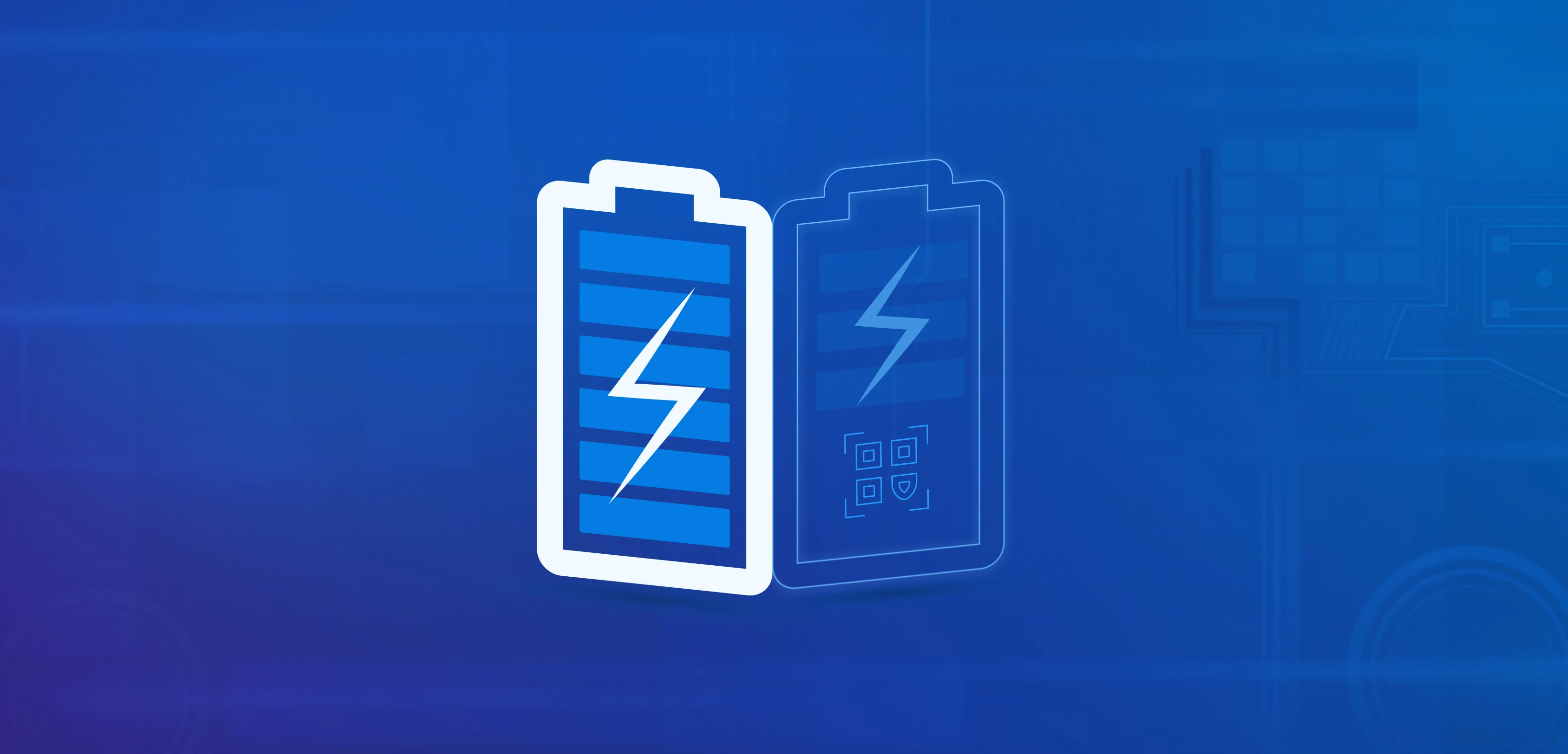
Digital twins act like a virtual backbone in the process of battery passports. The role of digital twins in building battery passports is capturing, storing and validating data throughout a battery’s value chain, recycles and upcycles. Each battery holds a specific digital identity such as a serial number, a QR code and linking it to its digital twin.
A digital twin is a living, digital model of a physical object. In the case of batteries, it combines:
All data regarding its factory onwards, chemistry, components and production procedures is uploaded to the twin as an “as-built” foundation. As the battery is used, sensors and its Battery Management System constantly feed real-time data; such as temperature, charge cycles, and overall health, into its digital twin, ensuring the record stays up-to-date.
Besides all these Digital Twins stores data on environmental impacts, recycled content, safety checks and performance details. Digital twins’s security measures, including cryptographic verification and audit trails, protect the integrity of the passport. Predictive analytics within the twin estimate the battery’s remaining useful life, supporting decisions about reuse, resale, or recycling.
The final battery passport, accessible via QR code or online portal, draws directly from the digital twin, providing regulators, consumers, and recyclers with a trusted, updated record of the battery’s journey.
Digital Twins at a glance:
Unlike a static database, a digital twin evolves in real time, mirroring the battery’s condition throughout its lifecycle. Similar to the battery’s digital shadow, it is always up to date and ready to reveal not just what the battery is, but also how it is performing and how long it might last.
Digital twin technology forms the pillar of battery passports by providing reliable, up-to-the-minute data. They make passports functional by:
Without digital twins, battery passports risk becoming little more than static documents. With them, they become dynamic, reliable tools that drive transparency and sustainability.
Manufacturers
Digital twins enhance efficiency and product quality through virtual replicas, offering real-time insights and predictive power. Benefits include improved quality control and defect reduction, optimized design and production, and streamlined regulatory compliance. They are crucial data-driven tools for transforming operations.
Consumers
Transparent battery origin and environmental impact data is essential for eco-conscious consumer choices, ethical business sourcing, and regulatory compliance. Robust testing and certification for second-hand batteries are vital for a circular economy, building confidence in refurbished products, extending battery life, and reducing waste. This ultimately fosters consumer trust through verifiable data and sustainability commitment.
Regulators
Digital Twins boost transparency and accountability in sustainability by:
Recyclers and Circular Economy Actors
Digital twins enhance recycling through precise material data. These virtual copies track products from creation to disposal, optimizing sorting, reducing waste, and increasing profits.
Accurate material knowledge prevents contamination, boosting recycled material value. Real-time data streamlines plant operations. Financial benefits include higher value materials, less landfill waste, and increased profits. Digital twins also promote responsible recycling and easier-to-recycle product designs, fostering a circular economy.
By 2030, battery passports are expected to become standard across EVs, consumer electronics, and energy storage. Digital twins will grow smarter, integrating AI for predictive maintenance, optimising charging strategies, and even autonomously deciding when a battery should be reused or recycled.
Digital twin technology forms the core of battery passports by capturing, storing, and validating data throughout a battery’s lifecycle. Its effectiveness is strengthened when integrated with cryptography, audit trails and blockchain. Blockchain secures the data, making it tamper-proof and verifiable. This ensures that manufacturers, regulators, and consumers can trust the information even across complex global supply chains.
Digital twin technology doesn’t work in isolation. By integrating with blockchain and CEAP-driven initiatives, it turns battery passports into trusted, actionable tools that support sustainability, transparency, and a truly circular economy; all while keeping things simple and clear for everyone involved.
This approach will likely expand into other industries through EU ESPR’s Digital Product Passports (DPPs), forming part of the wider EU Circular Economy Action Plan.
Digital twin technology plays a foundational role for effective battery passports by providing a trustworthy and dynamic record of a battery's production to end-of-life processes. To enrich battery passports credibility, digital twins as an inevitable tool that keeps sustainability in check.
Manufacturers will need to leverage digital twins as the regulations for transparency tightens. The purpose of the circular economy cannot not be served without proper implementation of these technologies.
Sources



.svg)
.svg)